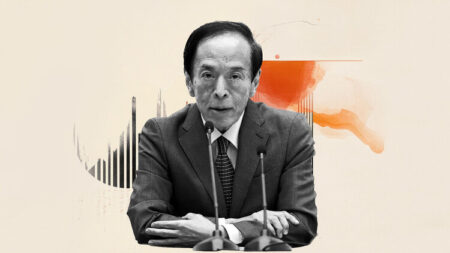In an interview with Bloomberg TV on Friday, Federal Reserve Bank of Cleveland President Beth Hammack noted that the July jobs data was disappointing, per Reuters.
Earlier in the day, the US Bureau of Labor Statistics (BLS) reported that Nonfarm Payrolls rose by 73,000 in July, missing the market expectation of 110,000. Additionally, noted that the May NFP increase was revised down by 125,000 and the change for June was revised down by 133,000.
“With these revisions, employment in May and June combined is 258,000 lower than previously reported,” the BLS said in its press release.
Key takeaways
“Job market bears watching closely.”
“Job market is still healthy and in balance but should be watched.”
“Confident FOMC decision was the right one.”
“Fed is still seeing pressure on inflation side of mandate.”
“Inflation is still influencing economic decisions.”
“Right now, Fed is missing much more on inflation side relative to jobs mandate.”
“Businesses have been dealing with high uncertainty.”
“Expecting to see inflation numbers tick up on tariffs.”
“Expecting to see tariff pass-through to prices.”
“Expecting to see job market weaken into end of year.”
“Fed policy is a little bit restrictive, not far from neutral.”
“There’s a lot more data to come before September meeting.”
“Now is a really tricky time for setting monetary policy.”
“Enormous respect for Fed Chair Powell.”
“Data will drive any thinking about monetary policy votes.”
“There is recognition for importance of central bank independence.”
Market reaction
The US Dollar Index struggles to stage a rebound following these comments. At the time of press, the USD Index was down 1.2% on the day at 98.85.
Hammack’s comments received a neutral/hawkish score of 6.0 by FXStreet Fed Speech Tracker. Meanwhile, FXStreet Fed Sentiment Index remains in hawkish territory slightly below 120.
Fed FAQs
Monetary policy in the US is shaped by the Federal Reserve (Fed). The Fed has two mandates: to achieve price stability and foster full employment. Its primary tool to achieve these goals is by adjusting interest rates.
When prices are rising too quickly and inflation is above the Fed’s 2% target, it raises interest rates, increasing borrowing costs throughout the economy. This results in a stronger US Dollar (USD) as it makes the US a more attractive place for international investors to park their money.
When inflation falls below 2% or the Unemployment Rate is too high, the Fed may lower interest rates to encourage borrowing, which weighs on the Greenback.
The Federal Reserve (Fed) holds eight policy meetings a year, where the Federal Open Market Committee (FOMC) assesses economic conditions and makes monetary policy decisions.
The FOMC is attended by twelve Fed officials – the seven members of the Board of Governors, the president of the Federal Reserve Bank of New York, and four of the remaining eleven regional Reserve Bank presidents, who serve one-year terms on a rotating basis.
In extreme situations, the Federal Reserve may resort to a policy named Quantitative Easing (QE). QE is the process by which the Fed substantially increases the flow of credit in a stuck financial system.
It is a non-standard policy measure used during crises or when inflation is extremely low. It was the Fed’s weapon of choice during the Great Financial Crisis in 2008. It involves the Fed printing more Dollars and using them to buy high grade bonds from financial institutions. QE usually weakens the US Dollar.
Quantitative tightening (QT) is the reverse process of QE, whereby the Federal Reserve stops buying bonds from financial institutions and does not reinvest the principal from the bonds it holds maturing, to purchase new bonds. It is usually positive for the value of the US Dollar.
Read the full article here
















